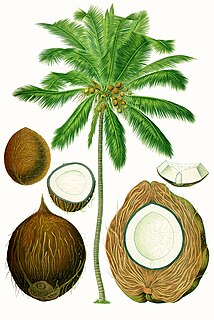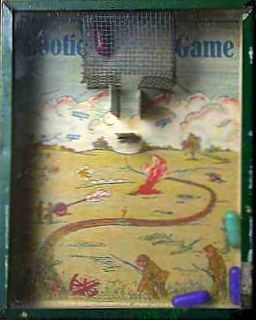Related Research Articles

Folklore is the body of culture shared by a particular group of people; it encompasses the traditions common to that culture, subculture or group. This includes oral traditions such as tales, legends, proverbs and jokes. They include material culture, ranging from traditional building styles to handmade toys common to the group. Folklore also includes customary lore, taking actions for folk beliefs, the forms and rituals of celebrations such as Christmas and weddings, folk dances and initiation rites. Each one of these, either singly or in combination, is considered a folklore artifact or traditional cultural expression. Just as essential as the form, folklore also encompasses the transmission of these artifacts from one region to another or from one generation to the next. Folklore is not something one can typically gain in a formal school curriculum or study in the fine arts. Instead, these traditions are passed along informally from one individual to another either through verbal instruction or demonstration. The academic study of folklore is called folklore studies or folkloristics, and it can be explored at undergraduate, graduate and Ph.D. levels.

The coconut tree is a member of the palm tree family (Arecaceae) and the only living species of the genus Cocos. The term "coconut" can refer to the whole coconut palm, the seed, or the fruit, which botanically is a drupe, not a nut. The name comes from the old Portuguese word coco, meaning "head" or "skull", after the three indentations on the coconut shell that resemble facial features. They are ubiquitous in coastal tropical regions and are a cultural icon of the tropics.

Bronisław Kasper Malinowski was a Polish-British anthropologist whose writings on ethnography, social theory, and field research have exerted a lasting influence on the discipline of anthropology.

Cooties is a fictitious childhood disease, commonly represented as childlore. It is used in the United States, Canada, Australia, New Zealand, and the Philippines as a rejection term and an infection tag game. It is similar to the British 'dreaded lurgi', and to terms used in the Nordic countries, in Italy, India and Iraq. A child is said to "catch" cooties through close contact with an "infected" person or from an opposite-sex child of a similar age.

The Trobriand Islands are a 450-square-kilometre (174-square-mile) archipelago of coral atolls off the east coast of New Guinea. They are part of the nation of Papua New Guinea and are in Milne Bay Province. Most of the population of 12,000 indigenous inhabitants live on the main island of Kiriwina, which is also the location of the government station, Losuia.
George Peter ("Pete") Murdock, also known as G. P. Murdock, was an American anthropologist who was professor at Yale University and University of Pittsburgh. He is remembered for his empirical approach to ethnological studies and his study of family and kinship structures across differing cultures. His 1967 Ethnographic Atlas dataset on more than 1,200 pre-industrial societies is influential and frequently used in social science research.

A singing game is an activity based on a particular verse or rhyme, usually associated with a set of actions and movements. As a collection, they have been studied by folklorists, ethnologists, and psychologists and are seen as important part of childhood culture. The same term is also used for a form of video game that involves singing.

Samoans or Samoan people are the indigenous Polynesian people of the Samoan Islands, an archipelago in Polynesia, who speak the Samoan language. The group's home islands are politically and geographically divided between the Independent State of Samoa and American Samoa, an unincorporated territory of the United States of America. Though divided by national border, the culture and language are the same.
Cognitive anthropology is an approach within cultural anthropology and biological anthropology in which scholars seek to explain patterns of shared knowledge, cultural innovation, and transmission over time and space using the methods and theories of the cognitive sciences often through close collaboration with historians, ethnographers, archaeologists, linguists, musicologists, and other specialists engaged in the description and interpretation of cultural forms. Cognitive anthropology is concerned with what people from different groups know and how that implicit knowledge, in the sense of what they think subconsciously, changes the way people perceive and relate to the world around them.

Argonauts of the Western Pacific: An Account of Native Enterprise and Adventure in the Archipelagoes of Melanesian New Guinea is a 1922 ethnological work by Bronisław Malinowski, which has had enormous impact on the ethnographic genre. The book is about the Trobriand people who live on the small Kiriwana island chain northeast of the island of New Guinea. It is part of Malinowski's trilogy on the Trobrianders, including The Sexual Life of Savages in North-Western Melanesia (1929) and Coral Gardens and Their Magic (1935).
Coral Gardens and Their Magic, properly Coral Gardens and Their Magic Volume I: A Study of the Methods of Tilling the Soil and of Agricultural Rites in the Trobriand Islands and Coral Gardens and Their Magic Volume II: The Language of Magic and Gardening, is the final two-volume book in anthropologist Bronisław Malinowski's ethnographic trilogy on the lives of the Trobriand Islanders. It concentrates on the cultivation practices the Trobriand Islanders used to grow yams, taro, bananas and palms which Malinowski's more famous ethnography Argonauts of the Western Pacific briefly mentioned in passing. It describes the gardens in which the Trobrianders grew food as more than merely utilitarian spaces, even as works of art. In 1988 Alfred Gell called the book "still the best account of any primitive technological-cum-magical system, and unlikely ever to be superseded in this respect". The book has been described as Malinowski's magnum opus.

The coconut crab is a species of terrestrial hermit crab, also known as the robber crab or palm thief. It is the largest terrestrial arthropod in the world, with a weight of up to 4.1 kg (9 lb). It can grow to up to 1 m in width from the tip of one leg to the tip of another. It is found on islands across the Indian Ocean, and parts of the Pacific Ocean as far east as the Gambier Islands and Pitcairn Islands, similar to the distribution of the coconut palm; it has been extirpated from most areas with a significant human population, including mainland Australia and Madagascar. Coconut crabs also live off the coast of Africa near Zanzibar.

Paul Sarasin, full name Paul Benedict Sarasin was a Swiss naturalist and ethnologist. He is known as founder of National parks in Switzerland.
Kilivila (Kiriwina) is one of the Kilivila–Louisiades languages, spoken by the Trobriand people of the Trobriand Islands. It is used in local schools.

Cook Islands mythology comprises historical myths, legends, and folklore passed down by the ancient Cook Islanders over many generations. Many of the Cook Islands legends were recited through ancient songs and chants. The Cook Islands myths and legends have similarities to general Polynesian mythology, which developed over the centuries into its own unique character.

The culture of the Cook Islands reflects the traditions of its fifteen islands as a Polynesian island country, spread over 1,800,000 square kilometres (690,000 sq mi) in the South Pacific Ocean. It is in free association with New Zealand. Its traditions are based on the influences of those who settled the islands over several centuries. Polynesian people from Tahiti settled in the Cook Islands in the 6th century. The Portuguese captain, Pedro Fernandes de Queirós, made the first recorded European landing in the islands in the early 17th century, and well over a hundred years later, in the 18th century, the British navigator, Captain James Cook arrived, giving the islands their current name. Missionaries developed a written language, bringing schools and Christianity to the Cook Islands in the early 19th century. Cook Islands Māori, also known as Māori Kūki 'Āirani or Rarotongan, is the country's official language.

In 2013, the island country Niue produced 3,200 tonnes of coconuts valued at INT$385,830. Coconut is a cash crop on the island, which is converted to derivatives such as copra and coconut cream in tinned form, and also exported. Originally, the island had a profusion of coconut trees reflected in the country's name, Niue, in the local language. The Niue Development Board is responsible for planning and execution of schemes of agricultural produce, including coconut and related products.
There are more than 1,200 Thai traditional games. These games originated in the era of the Sukhothai Kingdom (1238-1438). Hundreds of years later, during the reign of Rama VI, the games grew popular again among Thai children. The original purpose of Thai traditional games was to form good relationships between adults and young people. They were also used as entertainment, relaxation, and exercise. Thai traditional games are played with songs and rules to make them more entertaining. Most traditional Thai games use natural, found items, like children's games everywhere. For example, sand, mud balls, and the stems of the banana trees were common components of games.

Walter Alexander Kaudern was a Swedish zoologist and ethnographer. He made research trips to Madagascar and Sulawesi.
References
- Senft, Barbara; Senft, Gunter (2018). Growing up on the Trobriand Islands in Papua New Guinea: Childhood and educational ideologies in Tauwema. Culture and Language Use. John Benjamins Publishing Company. p. 65. ISBN 9789027264107.
- Morton, Helen (1996). Becoming Tongan: An Ethnography of Childhood. Pacific anthropology. University of Hawai'i Press. p. 150. ISBN 9780824817954.
- Kaudern, Walter (1925). Ethnographical Studies in Celebes: Games and dances in Celebes. M. Nijhoff. pp. 73–76.
- Orlick, Terry (1982). The Second Cooperative Sports & Games Book. Pantheon Books. p. 135. ISBN 0394748131.
- Chanan, Gabriel; Francis, Hazel (1984). Toys and games of children of the world. Unesco. p. 20. ISBN 9231022164.
- "I-ko". Folk Toys of Thailand. Princess Maha Chakri Sirindhorn Anthropology Centre. Retrieved 30 November 2019.